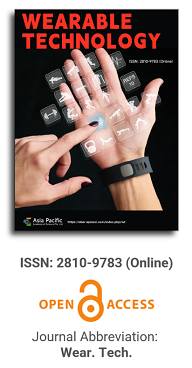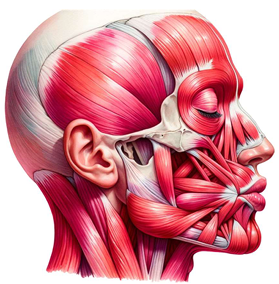

This paper delves deeply into the innovative realm of integrating human emotions with wearable technology. The primary focus is on the conceptualization and development of a kiss transfer device that harnesses the power of wearable technology to bridge the physical gap in human-human interactions. By investigating the intricate nuances of the human-human kissing process, the research seeks to replicate this intimate gesture through a technological medium. The paper not only elaborates on the anatomy, evolution, and hormonal dynamics of kissing but also underscores the transformative potential of wearable technology in capturing and transmitting these intimate moments. This exploration opens up new horizons for long-distance relationships, offering a tangible touchpoint that goes beyond traditional communication methods. Through this pioneering work, the research positions wearable technology as not just a tool for communication but as an extension of our human emotions and expressions.

Competitive advantage of wearable technology in sports training
Vol 3, Issue 1, 2022
Download PDF
Abstract
This document outlines wearable technology and the sources, related topics and authors of major publications on this subject in recent years. It is worth mentioning that wearable or wearable technology is also called “wearables” in English. It refers to theincorporationation of microprocessors, sensors and transducersthat we wear daily, which acts as a computer that always works with users, and can be used in a defined space for continuous interaction with users, wearable technology can be defined as an electronic device that can be embedded into human body to continuously obtain information. The purpose of this paper is to understand the development and current situation of this new technology, and apply it to new research findings and the development of wearable devices. The disciplinary connection between different knowledge fields provides a clear starting point for the development of research topics. In specific case of interest, the research focuses on the devices applied to sports, which are used to analyze the strength, flexibility and speed of athletes’ lower limbs, and generate sports evidence related to numerical data, so as to further analyze, explain and produce conclusive results. Electronic engineering performs all data processing similar to electricity, thus defining a part of wearable design for adaptation during physical activity. In the field of programming, system engineering is very important for the data conversion of sensors and the representation of these data in a way that people can understand. This new technology allows the generation of a wide variety of data, but integrates multiple disciplines at the same time. With the understanding of sports, people will test the complex problems around the human body and how to correctly explain the results of clothing elements that can be designed technically.
Keywords
References
- Villar IL. Sports Intelligent Device: Success or failure? Monograph; 2014–2015.
- Publindex. Available from: https://scienti.minciencias.gov.co/publindex/#/revistasPublindex/buscador
- Scopus. Available from: https://www.scopus.com/home.uri
- Simago. Available from: https://www.scimagojr.com/journalrank.php?category=2204&area=2200&year=2018
- Web of Science. Available from: https://url2.cl/EVzdq
- Mann S, Niedzviecki H. Cyborg: Digital destiny and human possibility in the age of the wearable computer. Doubleday Canada; 2001.
- Simancas E, Mateo-Sidrón NMM. Prospective study in Spain: Wearable technology in corporate sector. Possibilities as a communication tool. Journal ICONO 14 2017; 15(2): 220–243.
- Applications of wearable technology. Dispositivos Wearables; 2014. Available from: http://www.dispositivoswearables.net
- Zamorano E. On the long road from wearable computing to the public. FayerWayer. [Cited 2013 Aug 29]. Available from: https://www.fayerwayer.com/2013/08/el-largo-camino-de-la-computacion-vestible-para-llegar-a-las-masas/.
- Ávila BA. Mobile Robot Using an Adaptable Fuzzy Control on a Digital Signal Processor [PhD Thesis]. Colombia: Tesis de Maestría Universidad Nacional de Colombia; 2006.
- Suárez WFB, Fagua ALF. Prototipo adquisición y filtrado digital de señales para fonocardiografí [Digital signal acquisition and filtering prototype for phonocardiography]. Ciencia, Innovación y Tecnología 2015; 2: 17–24.
- Alfonso-Mora ML, Ávila-Barón A. Kinematic Changes of Gait in Patients with Knee Osteoarthritis by Different Weight bearings. Revista Ciencias de la Salud 2014; 12(3): 319–329.
- Vélez AC, Vidarte CJA, Hormaza M. Social determinants of health and disability, Tunja 2012 Summary. Archivos de medicina 2012; 14(1): 51–63.
- Reina MR, Neira SLC, Chía DMÁ. Automatización residencial un desafío profesional para el monitoreo de personas en condición de discapacidad visual [Residential automation a professional challenge for the monitoring of people with visual impairment]. Ingenio Magno 2019; 10(2): 50–64.
Supporting Agencies
Copyright (c) 2022 Angie Lorena Hernández, María Camila Barrera Cortés, Adolfo Ávila Barón, Luis Andrés TéllezTinjacá, Henry Alfonso Guío Ávila

This work is licensed under a Creative Commons Attribution 4.0 International License.

Prof. Zhen Cao
College of Information Science & Electronic Engineering, Zhejiang University
China, China
Processing Speed
-
-
-
- <5 days from submission to initial review decision;
- 62% acceptance rate
-
-
Asia Pacific Academy of Science Pte. Ltd. (APACSCI) specializes in international journal publishing. APACSCI adopts the open access publishing model and provides an important communication bridge for academic groups whose interest fields include engineering, technology, medicine, computer, mathematics, agriculture and forestry, and environment.





